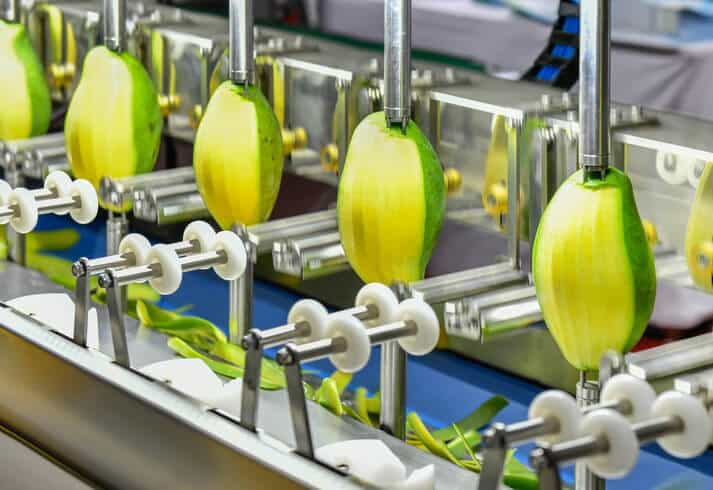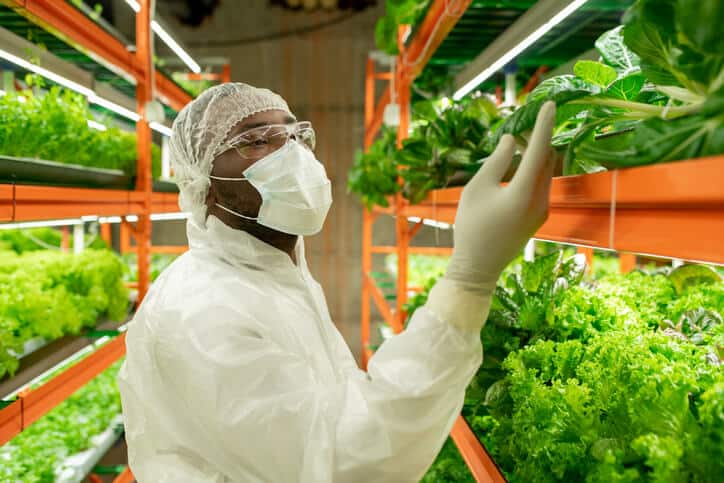Food safety, highlighted by comprehensive food safety training, remains a pressing concern in food processing and preparation. Every year, millions of tons of food are wasted due to the activities of harmful, spoilage-causing microorganisms and bacteria, which are responsible for significant food-borne illnesses, some of which can be deadly.
With antibiotic resistance continuing to pose a severe healthcare challenge, it is clear that tackling food safety issues at source remains the most effective way to combat threats. Necessity drives innovation, and in the food industry, innovation is relatively constant, marked by technological advancements that are revolutionizing how we handle food. Here’s a look at some cutting-edge innovations you might encounter during your food safety training.
Disinfecting With UV Lighting
Ultraviolet (UV) light technology has long been used for disinfecting hospitals and water treatment plants. Now, it is increasingly being adopted in food processing facilities. UV light disrupts the DNA of microorganisms like bacteria, viruses, and mould, rendering them inactive.
A non-chemical approach such as this offers several advantages. It’s fast, efficient, and doesn’t leave any harmful residues on food surfaces. Comprehensive food safety training highlights how UV light sanitizes conveyor belts, packaging materials, and air within processing facilities.

UV light technology is used in food processing plants, as you’ll learn in food safety training.
Food Safety Training Explores How Isochoric Freezing Preserves Taste and Texture
Traditional freezing methods can take hours, allowing ice crystals to form within food, damaging cell structure and affecting texture and taste. Isochoric freezing, however, is a new and innovative approach that rapidly freezes food at ultra-low temperatures while preserving the quality of the food.
Traditional freezing works under the principle of constant pressure (isobaric). This means as the temperature drops, the volume of the food can freely change. This approach often leads to the formation of large ice crystals within the food. These ice crystals damage the food’s cell structure, affecting its texture and quality.
Isochoric freezing offers a different approach. Here, the volume of the food remains constant throughout the freezing process. While the volume stays the same, the temperature and pressure change dramatically.
This rapid freezing method helps prevent the formation of large ice crystals, thereby minimizing cell damage and preserving the food’s original quality, taste, and nutritional value. Modern food safety courses are increasingly exploring how isochoric freezing can be used for high-risk items like seafood or pre-cooked meals to extend shelf life while maintaining safety.

Our food safety courses explain the isochoric freezing process and how it preserves food.
Using Artificial Intelligence to Interpret Data
AI has transcended science fiction and is now actively shaping the food industry. During food safety training, you will encounter discussions on how AI algorithms analyze vast datasets from food production, processing, and distribution.
By analyzing historical trends, weather patterns, sensor readings, and even past outbreaks, AI can predict potential food safety issues before they occur. This allows food businesses to take preventive measures such as adjusting storage conditions, implementing stricter hygiene protocols, or initiating targeted recalls before contaminated products reach consumers.
Reduce Contamination with Robotics and Automation
Robots have extended beyond factory assembly lines. In the food industry, they’re becoming valuable tools for ensuring hygiene and efficiency.
In food production and processing plants, automated systems can handle repetitive tasks like washing and sanitizing food processing equipment, helping minimize human contact with food and reducing the risk of contamination.
Robots can also perform delicate tasks more precisely and consistently than humans, improving overall food safety standards.

Automated systems reduce the risk of contamination, as our food safety courses highlight.
Blockchain Technology
Food safety breaches can erode consumer confidence. Blockchain technology, the secure digital ledger system behind cryptocurrencies, offers a potential solution. As the world advances, it’s crucial for food safety training programs to explore and explain how blockchain can create an unalterable record of a food item’s journey – from farm to fork.
This record would document every step, including the origin, processing, storage, and transport. Consumers could then access this information, fostering trust and transparency within the food supply chain. Blockchain can pinpoint the source quickly in a contamination outbreak, minimizing product recalls and potential harm.
Are you interested in our food safety diploma?
Contact AAPS for more information.




